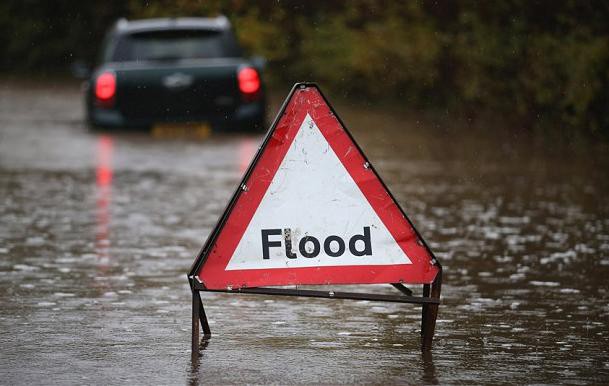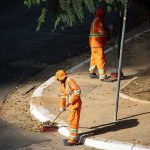Floods, rains, and other natural calamities are beyond human control. Despite advancements in technology, excessive water, and the complications it brings, always hurts social life in flood hit areas.
In 2011, the Mississippi River flooded the heartland of America. It was recorded as one of the most devastating floods in the history of America. If we were to rank US floods, the 2011 floods would rank third after the great floods of 1927 and 1972. Major states like Illinois, Kentucky, Arkansas, and Missouri were declared federal disaster areas. North Dakota and Minnesota also experienced heavy floods in 2011 because of heavy rains.
Restoring municipal services after the flood and bringing life back into order becomes a huge task for municipal authorities after such incidents. Flooding usually occurs near cities that are based near or contain rivers. In America, the geographical location of more than a hundred cities poses serious flood threats every year. The best technique to restore municipal services includes planning, proper drainage, and providing water diversion so that most of the water is bypassed in the main city area.
Basically, flood restoration process can be divided into the following four steps.
Planning! Floods do not occur overnight. Heavy rainfall and historical background analysis of a city, state, or town, in collaboration with the weather forecast department, can help in predicting the severity of floods. Planning always helps in reducing flood fatalities and property damage.
Detecting malfunctioning regions, areas, and public utilities is the next step in the flood restoration process.
Resource accumulation and allocation is next for municipal authorities. The most severely damaged areas are given preferential treatment.
Reconstruction and compensation measures are followed after restoration and disaster mitigation processes are over.
Restoration Measures
Following are the restoration measures that should be observed to minimize damage and bring municipal services back on the track.
The first and most important step always remains saving human lives. Rescue operations are guided to rescue and relocate people from risk prone areas to safe locations.
Reinforcing key levees and river bed dredging is a helpful measure to keep the restoration works going because floods can hit back at anytime.
Police, fire, and ambulance services must be restored at the earliest time because in a floodlike situation these services are the foundation for re-establishing order and law.
Restoring subways is done through the pumping systems and is important because underground water accumulation water is always dangerous to surfaces above as well.
Installing earthen berms, concrete ditch liners, manhole control gates, and chimney seals on sewer manholes will not only help in effective flood water drainage, but it will also help in the prevention of floodwater entry into the sewer lines.
To restore power and electricity, check for the submerged power stations, transformers, broken lines, and switchgear. Installation of new poles becomes very important because the old poles and lines often become weak due to excessive exposure to water. If on-site rectification does not work, transformers and switchgear should be replaced at the earliest opportunity.
Submerged electrical and electronic equipment must not be energized just after drying. Motors and electronic components might malfunction or their circuits might break down, so it is always advisable to have them checked and tested before operating them again. (Drying is a lengthy process, and depending upon the severity of the situation, replacing should be preferred over drying so as to quickly restore the services.)
Old buildings and wooden structures must be identified because they are the most vulnerable structures that can further aggravate the situation. Immediate restoration of wooden structures will result in bacterial genesis, and it could also lead to deterioration of wooden and wall coverings. Drying of wooden structures should be done before immediate restoration. Drying can be done using mops, sump pumps, and natural ventilation methods.
Restoring Sewerage System
During floods, septic tanks and sewers become blocked due to excessive water accumulation. Identifying blocked drains connecting to the sewer is first step. Pumping out accumulated debris is the next step; using vacuum suction pumps is highly advised. Redirect all the drains and underground sewer lines away from the foundations, either by using pumps or physically diverting the drains. Disinfection measures are taken to avoid any bacterial or viral disease. Disinfecting streets and public buildings is important to ensure public heath safety. Usually, the restoration process means observing the following steps.
During the primary treatment and screening of sewage, solid wastes are removed and disposed of.
Secondary treatment involves removing microbial particles from the sewage and redirecting it to enter into a water reclamation plant. Nitrogen, phosphorous, and other hazardous wastes are removed from sewage in this step.
Restoring Transportation Services

Restoration of transportation services is one of the most difficult parts of a rehabilitation program. A transportation system means not just railways and road transport, but it also includes maritime, aviation, pipelines, and pedestrian paths. Most of the states in US comply with the National Transportation Recovery Strategy (NTRS), which can be called a safe extension of the National Response Framework (NRF). Municipal authorities are supposed to provide more transport options to the public, promote walking, biking, and the use of abandoned pathways until the restoration processes are complete. Alternate routing and traffic diversion becomes important so as to avoid public to travel through the normal routes, which could result in delaying the restoration activities.
Flood water damage clean up requires a lot of funding and the only way to reduce expenditure is to plan and prepare well.


